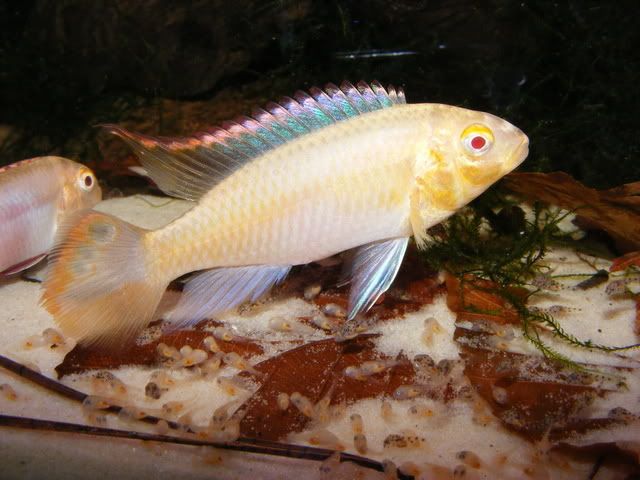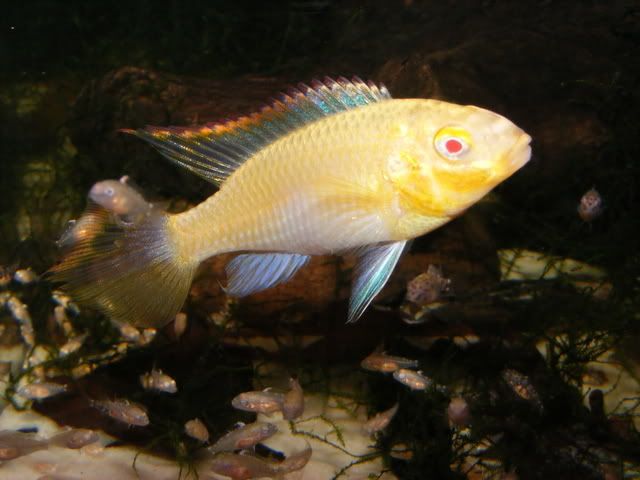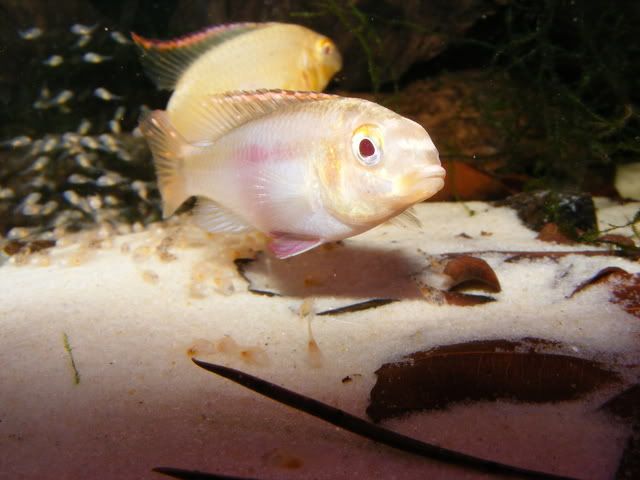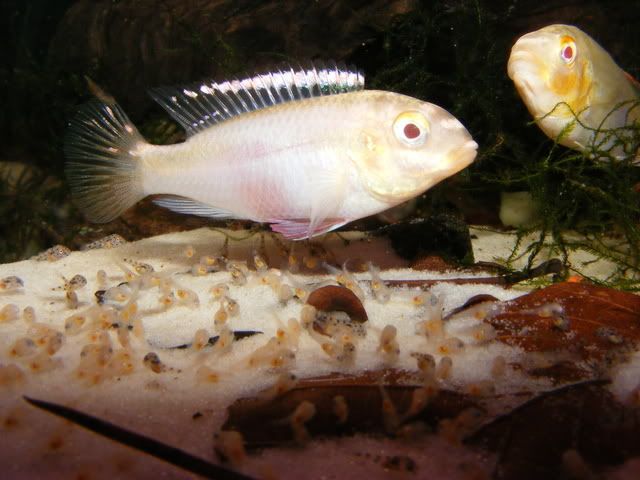- Messages
- 577
- Location
- Nottingham, UK
Hope the title wasn't too off-putting but I couldn't think of a more succinct thread title!!!
Basically Ste (Ste1200) and I had a little scheme to breed some kribs and improve his Albino fish and work with the Super Red form too. Unfortunately our plan has hit a little road bump as the female Super Red has died. However I have a male that is colouring up nicely despite a bit of a death wish (he's already been into the filter and been mixing it a pair of Wild scalare!!!).
My question is how is the extra red colouration of the Super Red strain inherited? Has anyone bred this strain or tried crossing it with another strain? If it's a dominant/recessive feature (which I don't think it will be, but I'm hoping...) then I can simply cross it to another nice spotty strain and then cross the F1 to get the extra red back. Otherwise it's going to be a more tortured affair I know!
Also the albino strain Ste is working with (I hope he'll add his experiences and maybe even some of his excellent photos here) seems to throw up a few interesting results suggesting it's not a straightforward albino with a single gene locus. Has anyone any experience of that and any unusual observation too?
I'm hoping we might be able to get a better idea of how the genetics work of the three factors I want in a krib strain. I'm looking whether we can cross Super Red with albino to get a white krib with a much stronger red colouration. I'm also hoping that we can breed more spots back into the Red strain and the albino strain too. I think a red, very spotty albino krib would look amazing!
Basically Ste (Ste1200) and I had a little scheme to breed some kribs and improve his Albino fish and work with the Super Red form too. Unfortunately our plan has hit a little road bump as the female Super Red has died. However I have a male that is colouring up nicely despite a bit of a death wish (he's already been into the filter and been mixing it a pair of Wild scalare!!!).
My question is how is the extra red colouration of the Super Red strain inherited? Has anyone bred this strain or tried crossing it with another strain? If it's a dominant/recessive feature (which I don't think it will be, but I'm hoping...) then I can simply cross it to another nice spotty strain and then cross the F1 to get the extra red back. Otherwise it's going to be a more tortured affair I know!
Also the albino strain Ste is working with (I hope he'll add his experiences and maybe even some of his excellent photos here) seems to throw up a few interesting results suggesting it's not a straightforward albino with a single gene locus. Has anyone any experience of that and any unusual observation too?
I'm hoping we might be able to get a better idea of how the genetics work of the three factors I want in a krib strain. I'm looking whether we can cross Super Red with albino to get a white krib with a much stronger red colouration. I'm also hoping that we can breed more spots back into the Red strain and the albino strain too. I think a red, very spotty albino krib would look amazing!





